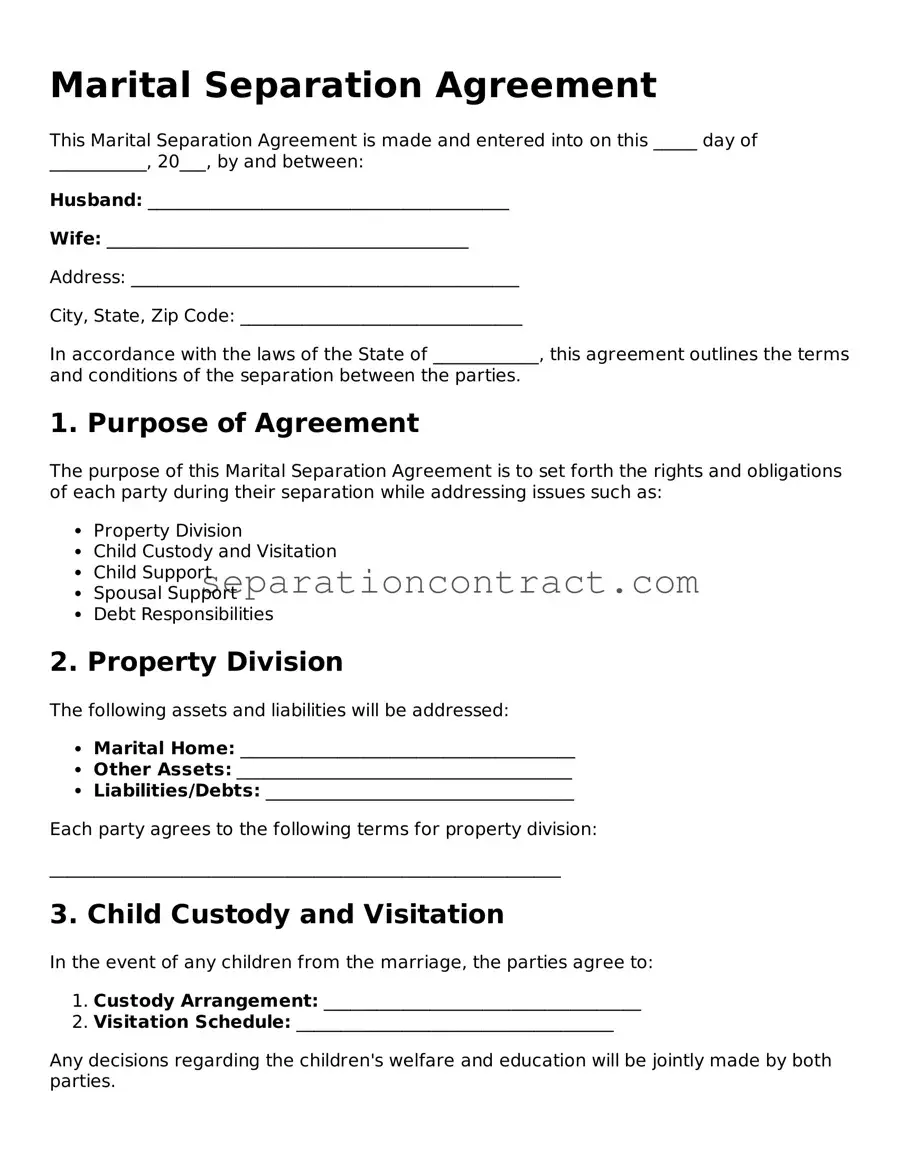Filling out a Marital Separation Agreement can be a daunting task. It is crucial to approach this process with care. One common mistake is failing to provide complete and accurate personal information. This includes names, addresses, and contact details. Incomplete information can lead to delays and complications in the separation process.
Another frequent error is neglecting to specify the terms of child custody and visitation. Parents must clearly outline how custody will be shared and how visitation will work. Vague language can lead to misunderstandings and disputes later on. It is essential to prioritize the best interests of the children involved.
Many individuals overlook the importance of detailing financial responsibilities. This includes child support, alimony, and division of assets and debts. Failing to address these issues can result in financial instability. Both parties should understand their obligations moving forward.
Additionally, some people mistakenly assume that a verbal agreement is sufficient. A Marital Separation Agreement must be in writing to be enforceable. Relying on oral promises can lead to disputes and confusion. It is imperative to document all agreements clearly.
Another mistake is not considering future changes in circumstances. Life can be unpredictable, and agreements should allow for modifications if necessary. It is wise to include provisions for revisiting the terms as situations evolve.
Some individuals also forget to seek legal advice before finalizing the agreement. Consulting with a lawyer can provide valuable insights and help avoid potential pitfalls. A professional can ensure that the agreement complies with state laws and protects your interests.
People often underestimate the importance of both parties signing the agreement. An unsigned document lacks legal validity. Ensure that both parties review and sign the agreement in the presence of a witness or notary if required by state law.
Finally, failing to keep a copy of the signed agreement can lead to issues down the line. Each party should retain a copy for their records. This ensures that everyone has access to the terms agreed upon and can refer back to them when necessary.
